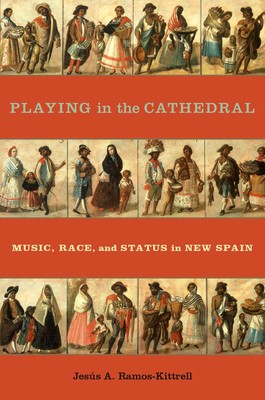
- We will send in 10–14 business days.
- Author: Jesús A Ramos-Kittrell
- Publisher: Oxford University Press, USA
- ISBN-10: 0190236817
- ISBN-13: 9780190236816
- Format: 13.7 x 21.3 x 3.1 cm, hardcover
- Language: English
- SAVE -10% with code: EXTRA
Reviews
Description
Throughout Spanish colonial America, limpieza de sangre (literally, "purity of blood") determined an individual's status within the complex system of social hierarchy called casta. Within this socially stratified culture, those individuals at the top were considered to have the highest calidad-an all-encompassing estimation of a person's social status. At the top of the social pyramid were the Peninsulares: Spaniards born in Spain, who controlled most of the positions of power within the colonial governments and institutions. Making up most of the middle-class were criollos, locally born people of Spanish ancestry. During the late seventeenth and early eighteenth centuries, Peninsulare intellectuals asserted their cultural superiority over criollos by claiming that American Spaniards had a generally lower calidad because of their "impure" racial lineage. Still, given their Spanish heritage, criollos were allowed employment at many Spanish institutions in New Spain, including the
center of Spanish religious practice in colonial America: Mexico City Cathedral. Indeed, most of the cathedral employees-in particular, musicians-were middle-class criollos.
Ramos-Kittrell argues that music, as a performative and theoretical activity, was a highly dynamic factor in the cultural and religious life of New Spain, and an active agent in the changing discourses of social status and "Spanishness" in colonial America. Offering unique and fascinating insights into the social, institutional, and artistic spheres in New Spain, this book is a welcome addition to scholars and graduate students with particular interests in Latin American colonial music and cultural history, as well as those interested in the intersections of music and religion.
EXTRA 10 % discount with code: EXTRA
The promotion ends in 16d.21:58:10
The discount code is valid when purchasing from 10 €. Discounts do not stack.
- Author: Jesús A Ramos-Kittrell
- Publisher: Oxford University Press, USA
- ISBN-10: 0190236817
- ISBN-13: 9780190236816
- Format: 13.7 x 21.3 x 3.1 cm, hardcover
- Language: English English
Throughout Spanish colonial America, limpieza de sangre (literally, "purity of blood") determined an individual's status within the complex system of social hierarchy called casta. Within this socially stratified culture, those individuals at the top were considered to have the highest calidad-an all-encompassing estimation of a person's social status. At the top of the social pyramid were the Peninsulares: Spaniards born in Spain, who controlled most of the positions of power within the colonial governments and institutions. Making up most of the middle-class were criollos, locally born people of Spanish ancestry. During the late seventeenth and early eighteenth centuries, Peninsulare intellectuals asserted their cultural superiority over criollos by claiming that American Spaniards had a generally lower calidad because of their "impure" racial lineage. Still, given their Spanish heritage, criollos were allowed employment at many Spanish institutions in New Spain, including the
center of Spanish religious practice in colonial America: Mexico City Cathedral. Indeed, most of the cathedral employees-in particular, musicians-were middle-class criollos.
Ramos-Kittrell argues that music, as a performative and theoretical activity, was a highly dynamic factor in the cultural and religious life of New Spain, and an active agent in the changing discourses of social status and "Spanishness" in colonial America. Offering unique and fascinating insights into the social, institutional, and artistic spheres in New Spain, this book is a welcome addition to scholars and graduate students with particular interests in Latin American colonial music and cultural history, as well as those interested in the intersections of music and religion.


Reviews